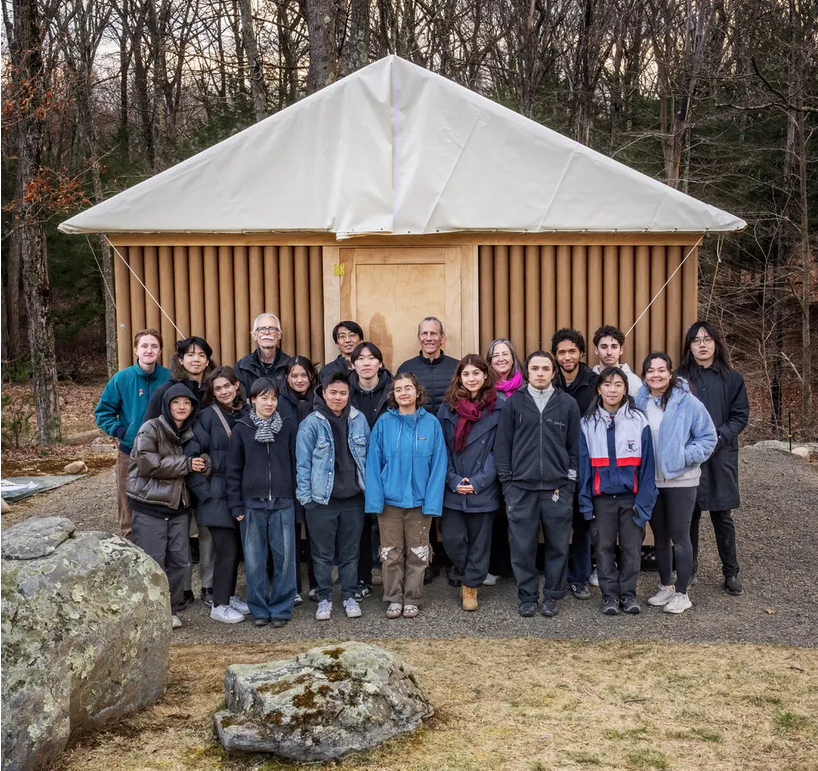Japanese architect Shigeru Ban’s Paper Log House has been added to a Glass House and a Brick House at architect Philip Johnson’s former estate in New Canaan, Connecticut. It’s a small house — just one room — and it’s made mostly of paper, but it’s more resilient than it looks.
 The foundation is made of milk crates, rather than reclaimed Japanese beer crates filled with sandbags. The walls are vertical paper tubes — like those used for mailing documents or spooling carpet — held together with foam tape and threaded rods; the roof is made from more paper tubes fastened with plywood connectors.
The foundation is made of milk crates, rather than reclaimed Japanese beer crates filled with sandbags. The walls are vertical paper tubes — like those used for mailing documents or spooling carpet — held together with foam tape and threaded rods; the roof is made from more paper tubes fastened with plywood connectors.
 Those tubes and their surprising strength are a longstanding fascination for Mr. Ban. Since he graduated from the Cooper Union in New York and started his architecture practice in Tokyo in 1985, he has designed paper-tube homes, bridges, churches, offices and exhibition pavilions, temporary and permanent, as well as an enormous arch that covered the Museum of Modern Art’s sculpture garden in 2000.
Those tubes and their surprising strength are a longstanding fascination for Mr. Ban. Since he graduated from the Cooper Union in New York and started his architecture practice in Tokyo in 1985, he has designed paper-tube homes, bridges, churches, offices and exhibition pavilions, temporary and permanent, as well as an enormous arch that covered the Museum of Modern Art’s sculpture garden in 2000.
 His paper-tube homes have been used in Rwanda, Turkey, India, Haiti, China, Hawaii and New Zealand as shelters for those who lost their homes in a disaster. The paper tube, Mr. Ban said, is ideal for building in disaster situations because “it’s lightweight, it’s inexpensive and it’s available almost anywhere in the world.”
His paper-tube homes have been used in Rwanda, Turkey, India, Haiti, China, Hawaii and New Zealand as shelters for those who lost their homes in a disaster. The paper tube, Mr. Ban said, is ideal for building in disaster situations because “it’s lightweight, it’s inexpensive and it’s available almost anywhere in the world.”
 You can read the original article at www.nytimes.com
You can read the original article at www.nytimes.com


How strong is the paper? Can this be adapted for several stories or is it necessarily limited to one?
With proper engineering, I expect one could go more than one story. After all the architect has built bridges with this material.
How’s the paper waterproofed? I could be wrong, but unless some sort of coating or something is over the paper, the building will disintegrate the moment it starts to rain! That said, this cottage is definitely ingenious and creative!
I don’t think there is any attempt to waterproof the paper; it is protected by roof overhangs and will dry out in the air. Many of the paper buildings have been temporary shelters.